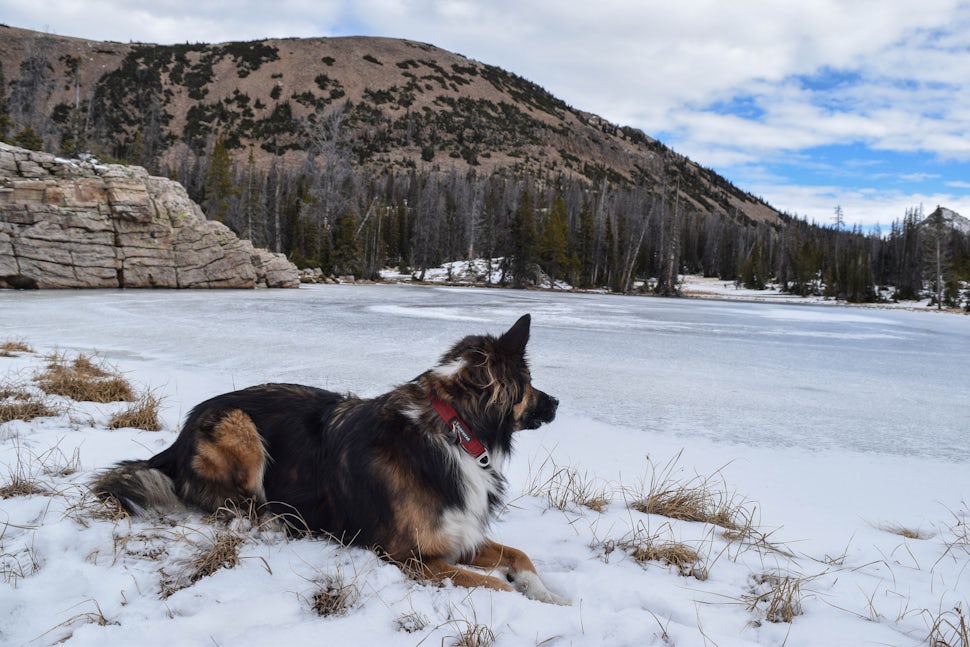Top 10 Tips for Hiking with Dogs in Winter
Explore the snow with your furry best friend.

Hiking, or snowshoeing, with your dog in the winter can be just as fun as hiking with them in other seasons. Or even more. Here are my top tips for hiking with dogs in the winter:
1. First thing to do is check that the area you're planning to visit allows dogs. It also helps to check if that area is even accessible in the winter and to have a backup plan if not.
2. Start off slow. Hiking in snow is usually more work than on solid ground. If you don't usually venture out in the snow, start with a shorter trip to see how your dog handles it.
3. Take frequent breaks. Don't just plan on a "start to finish" hike. Hiking in the snow already takes longer as it is, but you need to also account for breaks in your hike. Make sure to have lots of treats and/or trail food for dogs on hand. They need the extra fuel that those provide. Our go to is Zukes. They have plenty of options for treats that boost a dog mid-hike.

4. Keep your dog hydrated! Since it's colder out, you may not think that they need as much water, but makes sure to still offer them plenty. They might not drink it, but it's best to have that option there. Also make sure they drink plenty after the hike.
5. It's always handy to know the signs of hypothermia in dogs. Symptoms like excessive shivering, weakness/tiredness, slow and shallow breathing, and lack of alertness are all things to watch out for.

6. Care for those paws! Whether it's cute little boots or a product like Musher's Secret, keep those paws protected. Dog's paws can handle a lot in all different kinds of terrain, but it's still important to care for them whether it be before, after, or during the hike. If you choose to put a product on, do it before and after the hike. Before for the protection and after for the conditioning. If they aren't wearing boots, clean between your dog's toes when taking a break. If they clean their paws themselves, they're just more likely to get more snow stuck on by adding that extra moisture.
7. Look into the many options of jackets and coats. Short fur dogs or dogs that get cold easily will need these more than long coats. Loki uses his jacket on trips longer than a couple hours with temperatures below 35 F

8. Don't let your dog near edges of cliffs or mountains. Snow can cause a false sense of solid ground and it could easily cave in and take your dog down with it. Let them run and play and be a dog, but keep an eye out.
9. And finally, after you and your adventure pup have made it home safely, give them a good rubdown. Work their paws, legs, hips, and anything else. It's tough work on muscles no matter how active they are!
10. There are always things to keep in mind when being in the great outdoors with your dog, but the best thing to keep in mind is to get out and have fun with your furry best friend!
We want to acknowledge and thank the past, present, and future generations of all Native Nations and Indigenous Peoples whose ancestral lands we travel, explore, and play on. Always practice Leave No Trace ethics on your adventures and follow local regulations. Please explore responsibly!
Do you love the outdoors?
Yep, us too. That's why we send you the best local adventures, stories, and expert advice, right to your inbox.







